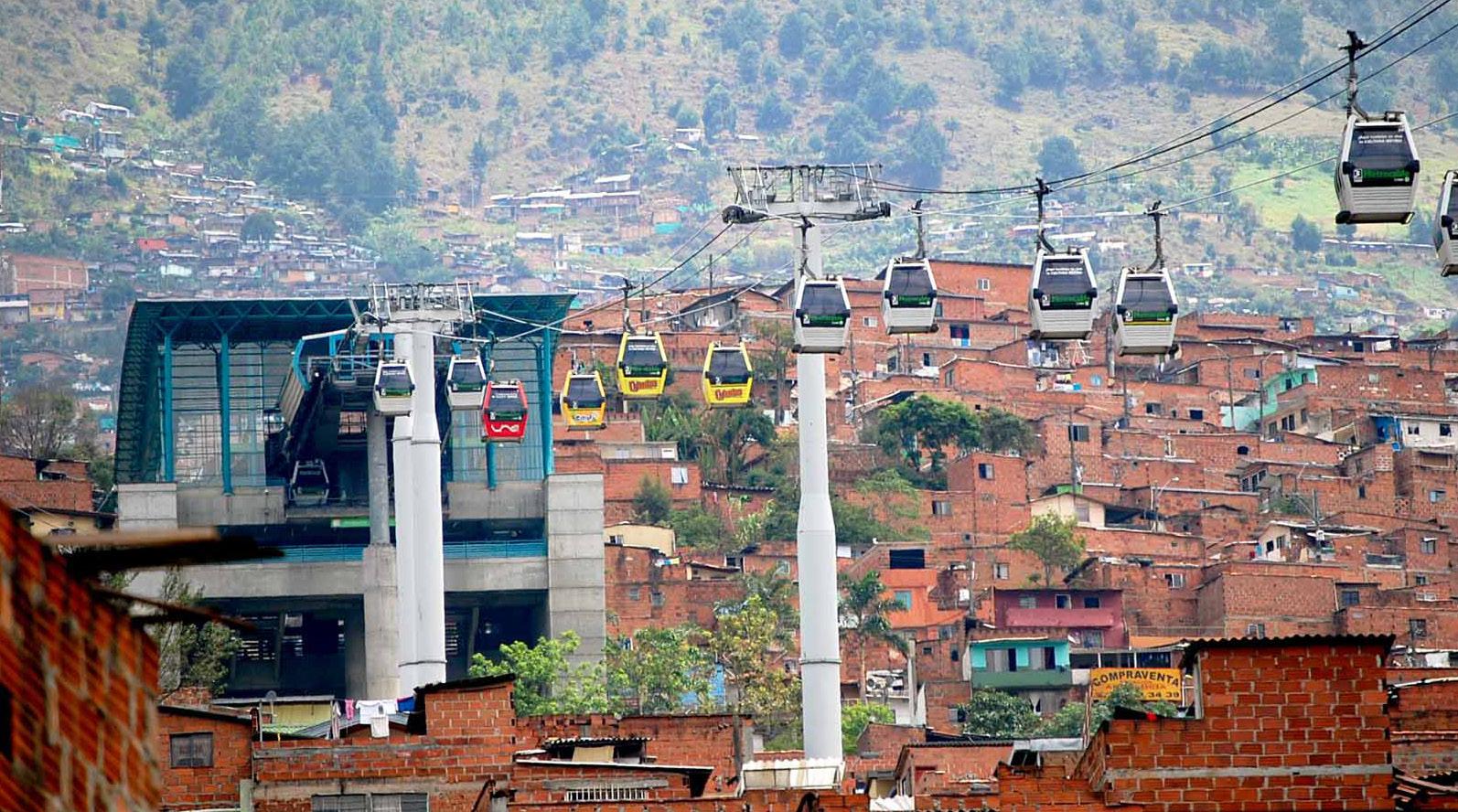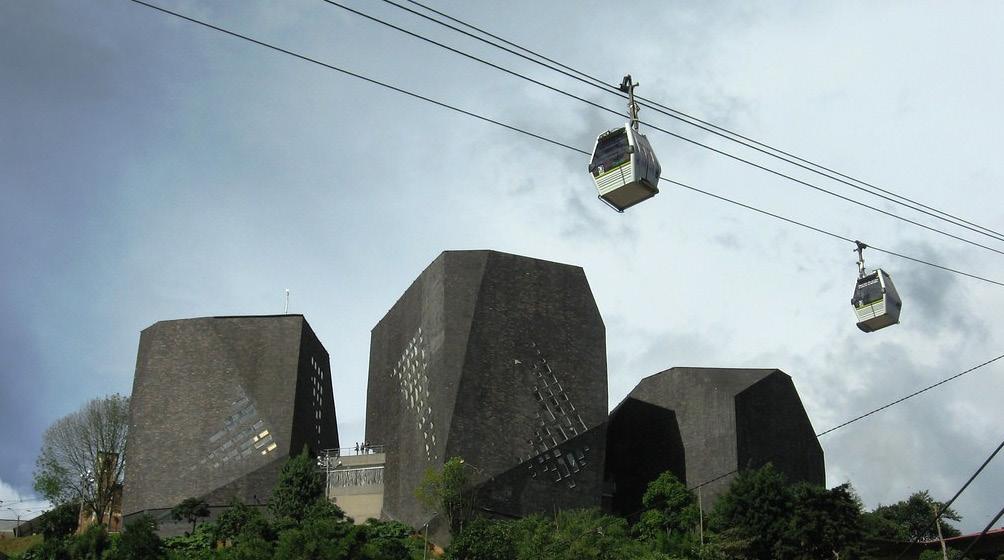
2 minute read
THE METRO-CABLE
In the reading ‘mobility innovation at the urban margins’ it looks at Medellin’s metro cable system and how it used to help integrate and include those further from the city and those in informal settlements. And was seen to integrate them into the urban fabric. After years of trying to raze and evict those living within formal settlements all that happened is that they moved to areas so the government and state in Medellin decided instead of that tactic they would identify all those living within as general population and were instead going to provide infrastructure and municipal facilities for those living within the barrios. The main premise of the use of the metro cables was to provide a way for those in these settlements to access opportunity and work within Medellin and therefore improve their living standards and conditions.
In the paper a quote is used “the freedom from spatial ties is what stratifies and polarizes the wealthier from the poor” which in essence is saying that mobility is an additional form of social inequality especially in Latin America.
Advertisement
With the new change in mayor in the early 2000s the first cable car (Line K) was inaugurated and gave access from some of the most remote places in the northwestern region of Medellin, the cable car can transport up to 3000 people an hour. It cost 24 million to construct and was proven to have a better cost per kilometre square compared to the BRT and rail system also in use across the city.
With the construction of over lines such as line L, J, H and M means there is now a web of cable cars going across most of the city and has provided a great way of travel in terms of Medellin's topography and has given to access to the city to thousands of its residents.

But despite all this the bus and walking are still the most used and preferred modes of transport and this is for a multitude of reasons. Due to the cable cars capacities at rush hours and busy periods, waits can be very long with a city with a population of over 4 million 3000 people an hour is still not enough. Also, another key issue is the fact that bulky and heavy loads are not permitted meaning all construction workers and traders cannot use them either which makes up a large portion of the informal settlements’ income.
In conclusion the metro cable was a great initial way to provide access to those in the more remote areas of the city and give them the opportunity to travel and find work. But it was not an entire solution to the issue with some key drawbacks. But has shown a way that maybe with some advances in technology and construction could be tailored to for example, have heavy loads onboard, increase cable speed, or cable car size to carry more people even if the cable car size doubled or the cable speed it would mean 6000 people could be carried an hour which is a 200% increase from before. These simple methods could be a solution to make the metro cable more appealing and useful to more of the population.










